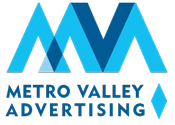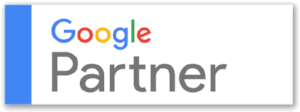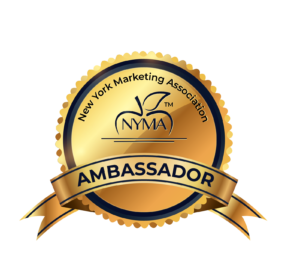At the start of the year, I tested AI’s ability to build a marketing plan. I hoped it would be fast, smart, and helpful. It was fast—but not that smart. So, I ran a new test. I wanted to know: Can AI build a media plan. I needed to know, can AI build a smart media plan? So we gave AI real client briefs. We also gave it fake ones to test range. And we used the same RFP for each platform. It included goals, audience, geography and budget. In some cases, the AI tools could access client websites for added context.
To keep it fair, I tested three AI platforms: ChatGPT-4, Google Gemini, and the latest sensation DeepSeek. Let’s look at how each performed—starting with a Personal Injury Attorney.
Personal Injury Attorney Media Plan – $1.2M Budget
This attorney is based in Northern New Jersey. The goal was to reach nearby counties with a strong message. We wanted real lead generation, not just awareness. All three platforms recognized the emotional core of this work—injured people want justice. But that’s where the insight stopped. Personal Injury attorney advertising is an art.
ChatGPT made a balanced plan on paper. It gave 50% to paid search. Then it spread the rest across four tactics. But those allocations felt thin. Just $15,000 per month for both social and programmatic is not enough. Local TV and outdoor got $10,000 each per month, which won’t move the needle. Local radio got $15,000—but in this case, that spend would work better if shifted to TV or OOH.
Gemini focused on four platforms only. It divided the budget more evenly. Gemini also named specific media vendors—sometimes too narrowly. For example, it left out the top classic rock station in North Jersey. Instead, it suggested public radio which only allows sponsorships, not ads. Gemini put 75% of the budget into traditional media. That felt excessive, especially since it skipped social and programmatic altogether.
DeepSeek brought in a fifth platform: direct mail. That was the most interesting idea. Direct mail can be highly targeted, especially in New Jersey where police records are public fast. While some may feel it borders on aggressive outreach, it’s still worth considering. DeepSeek split the budget 60/40—traditional to digital—but it also recommended NYC radio and TV. Yes, those stations reach North Jersey, but there’s a lot of wasted spend. There are far more efficient local options.
None of the tools recommended streaming media. Programmatic was mentioned, but with no detail. Also, none of them tied their budgets to actual media costs. That’s a problem. If your budget doesn’t match media pricing, you’ll fail to reach enough people with enough frequency.
Medical Practice Media Plan – $300K Budget
This client is based in New York City. The audience is younger and lives entirely in the city. We kept the structure the same. The RFP included all the key details.
ChatGPT recommended five platforms: search, social, programmatic, local radio, and OOH. The last two stood out. $3,000 per month for NYC radio will barely buy you any time. Same with Outdoor at $6,000. Both would fail to generate meaningful reach. The digital picks were fine, but the traditional ones didn’t make sense.
Gemini took a smarter approach. It avoided Radio and Outdoor. It focused on search and programmatic. Gemini also added call tracking—a smart move. That helps tie media spend to lead generation. Gemini’s use of streaming audio was also smart. You get geographic and audience targeting without the waste of broader platforms.
DeepSeek favored digital, but also suggested local TV, radio, and Outdoor. The budgets were too small to be useful. Only the digital side of its plan made sense.
Household Product Media Plan – $150k Budget
This client sells a pet-related product. The goal was a national campaign for Women 18-54 who own dogs. The client requested a year-long video plan focused on YouTube, Meta, TikTok, and streaming TV. Sales increase around the holidays, and the RFP mentioned that. The budget was $150k
ChatGPT followed the RFP word-for-word. Budgets were split evenly each month. But it missed the holiday spike. There was no strategy—just even spend. It treated the RFP as the plan itself.
Gemini ignored some of the client’s input. It dropped streaming TV. As that has the highest CPM of all the client suggestions it made sense. But it stressed TikTok, even though the client said it had not worked before. Gemini did a better job planning for peak sales. Its seasonal spend strategy showed more depth.
DeepSeek grouped Meta, YouTube, and programmatic into one bucket. That lacked focus. It didn’t seem to dig into the brief or the target audience. In this case, DeepSeek underperformed.
The Limits of AI in Media Planning
None of the tools had access to real rates. That’s still a human job. Media companies want control. They won’t share rates without knowing who’s asking and why. And no AI can yet build a proper TV or radio plan without serious prompting. Frankly, there is no need. Software already exist to create TV and Radio media plans. Those platforms can ingest data from sources like Nielsen. Why reinvent the wheel.
One thing that jumped out from these 3 test cases was AI did not seem to consider Reach and Frequency with regards to recommendations. Suggesting radio in the New York market with a $3,000 monthly budget or OOH for $6,000 is not a recommendation a good media planner would make.
None of the platforms considered that a national campaign against women dog owners 18-54 should not be attempted with a $150,000 budget. Gemini estimates there are between 60-80 million women dog owners between 18-54 in the US. You cannot reach all of your target audience even once with that spend. A smarter recommendation would be to reduce the target audience size (reduce geography or the demo) to allow for sufficient reach and frequency.
With Out-of-Home, AI can’t assess board quality or visibility. It cannot sort through sell sheets. AI doesn’t know if a panel sits near your audience or faces a parking lot.
AI can do more with programmatic. We often use benchmark rates when building programmatic plans. These allow AI to build out reach and frequency models. With guidance, AI could help there.
What AI can’t yet do is work inside real dashboards. Both Google and Meta have planning tools I don’t know how AI could access those mechanisms. AI can certainly help find keywords, write ad copy and headlines. But, platforms like Meta and Google Ads have their own AI systems. A human still needs to plan, monitor, and optimize.
Final Thought
For now, media planning and buying needs a human. AI is a good assistant—not a strategist. It doesn’t grasp the nuance of pricing, targeting, and timing. It can’t measure impact or pivot fast.
If you’re a Personal Injury Attorney or a professional marketer, don’t rely on shortcuts. A strong media plan requires both experience and precision. And until AI can match that, trust an Advertising Agency that knows how to drive Lead Generation.
As always, I am happy to make my prompts available. Have your own prompts or AI results? I’d like to see them.
Let’s compare notes.



